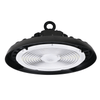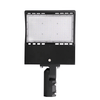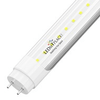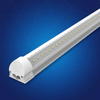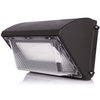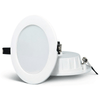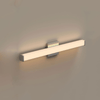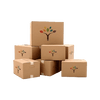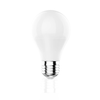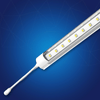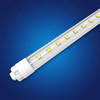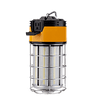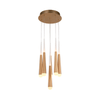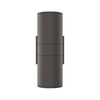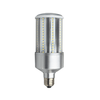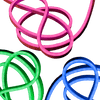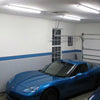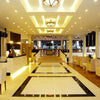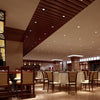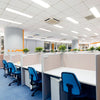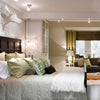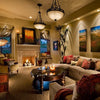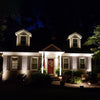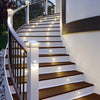If you are planning to buy LED lights, you might have heard the term "color temperature" before. The color temperature of LED lights plays an important role in how you perceive their brightness and color. Understanding the color temperature scale is crucial in determining the right lighting for your space. In this article, we will dive into what the color temperature scale is, how it works, and what are the various applications of different color temperatures.
Table of Contents
|
Introduction
LED lights have revolutionized the lighting industry, providing energy-efficient and long-lasting lighting solutions. However, with so many types of LED lights available in the market, it can be challenging to choose the right one for your space. The color temperature of LED lights is an essential factor to consider when purchasing LED lights. In this article, we will explore what the color temperature scale is, how it works, and what are the different applications of various color temperatures.
What is the Color Temperature Scale?
The color temperature scale is a way of measuring the color appearance of light sources. It is measured in Kelvin (K) and represents the hue of the light emitted from the light source. The color temperature scale ranges from warm colors (reddish-yellow) to cool colors (bluish-white).
Understanding the Kelvin Scale
The Kelvin scale measures the color temperature of a light source. It ranges from 1000K to 10,000K. Lower Kelvin temperatures represent warm colors, while higher Kelvin temperatures represent cool colors. The Kelvin scale was developed based on the principle that as the temperature of an object increases, the color of light it emits changes.

What are Warm Colors?
Warm colors are typically below 4000K and have a reddish-yellow tint. They are often used in spaces where a cozy and comfortable ambiance is desired, such as living rooms, bedrooms, and restaurants. Warm colors are also ideal for accent lighting, such as highlighting artwork and architectural features.
What are Cool Colors?
Cool colors are typically above 4000K and have a bluish-white tint. They are often used in spaces where a bright and energizing ambiance is desired, such as offices, hospitals, and schools. Cool colors are also ideal for task lighting, such as reading, writing, and studying.
What is the Neutral Color?
The neutral color temperature is typically around 4000K and has a white tint. It is often used in spaces where a neutral and balanced ambiance is desired, such as kitchens, bathrooms, and retail stores.
What is the Best Color Temperature for Indoor Lighting?
The best color temperature for indoor lighting depends on the space and the purpose of the lighting. Warm colors are ideal for creating a cozy and comfortable ambiance, while cool colors are ideal for creating a bright and energizing ambiance. Neutral colors are ideal for creating a balanced and versatile ambiance. For living spaces, warm colors between 2700K to 3000K are ideal, while for task lighting, cool colors between 4000K to 5000K are ideal.
What is the Best Color Temperature for Outdoor Lighting?
The best color temperature for outdoor lighting also depends on the purpose of the lighting. Cool colors are ideal for security and safety lighting, as they provide better visibility and help identify potential threats. Warm colors are ideal for outdoor accent lighting, such as highlighting architectural features and landscaping.
Color Temperature and Mood
Color temperature can also affect our mood and emotions. Warm colors can create a relaxing and cozy ambiance, while cool colors can create a refreshing and invigorating ambiance. Neutral colors can create a balanced and harmonious ambiance. Understanding the mood and emotion you want to evoke in a particular space can help you choose the right color temperature.
Color Temperature and Productivity
Color temperature can also affect our productivity and performance. Cool colors can increase alertness and focus, making them ideal for task lighting in offices and schools. Warm colors can induce relaxation and comfort, making them ideal for living spaces and bedrooms.
Color Temperature and Health
Color temperature can also affect our health and well-being. Exposure to cool colors at night can disrupt our circadian rhythm and affect our sleep quality. Warm colors are ideal for creating a relaxing and soothing ambiance in the evening. Choosing the right color temperature can help improve our sleep quality and overall health.
Color Temperature in Photography and Filmmaking
Color temperature is also an essential factor in photography and filmmaking. Different color temperatures can create different moods and emotions in a scene. Understanding color temperature can help photographers and filmmakers create the desired look and feel in their work.
How to Choose the Right Color Temperature for Your Space?
Choosing the right color temperature for your space depends on several factors, such as the purpose of the lighting, the mood and emotion you want to evoke, and the activities that will take place in the space. It is essential to consider these factors before purchasing LED lights. You can also consult with a lighting professional to help you choose the right color temperature for your space.
Conclusion
The color temperature of LED lights plays an important role in how we perceive their brightness and color. Understanding the color temperature scale and its applications can help us choose the right LED lights for our spaces. Whether you want to create a cozy and comfortable ambiance or a bright and energizing ambiance, choosing the right color temperature can help you achieve your desired look and feel.
FAQs
-
What is the color temperature of natural daylight?
- The color temperature of natural daylight is around 5500K to 6500K.
- Yes, some LED lights come with adjustable color temperature settings.
3. Can the color temperature of LED lights affect our health?
- Yes, exposure to cool colors at night can disrupt our circadian rhythm and affect our sleep quality.
4. What is the ideal color temperature for reading?
- The ideal color temperature for reading is between 4000K to 5000K.
5. Can the color temperature of LED lights affect our mood?
- Yes, warm colors can create a relaxing and cozy ambiance, while cool colors can create a refreshing and invigorating ambiance.





